Abstract
Aortoenteric fistula (AEF) developed after treatment for an abdominal aortic aneurysm (AAA) is a rare but usually fatal complication. We report a rare case of AEF bleeding after endovascular stent grafting for AAA which was managed angiographically. An 81-year-old man presented with hematochezia and acute abdominal pain for 1 day ago. Four years ago, an aortic stent was implanted in the infrarenal aorta for AAA. Endoscopies were performed to evaluate the hematochezia. Evidence of gastrointestinal bleeding was observed, but a clear bleeding point was not detected on upper endoscopy and colonoscopy. Contrast-enhanced computed tomography performed subsequently showed that the bleeding point was located in the fourth portion of the duodenum as an AEF caused by an inflammatory process in the stent-graft. Intraarterial angiography showed a massive contrast leakage into the bowel via a small fistula from around the aortic stent graft site. Embolization was successfully performed by injecting a mixture of glue and lipiodol into the AEF tract. The patient was discharged with no evidence of gastrointestinal bleeding after the embolization.
References
1. Flye MW, Thompson WM. Aortic graft-enteric and para-prosthetic-enteric fistulas. Am J Surg. 1983; 146:183–187.

2. Voorhoeve R, Moll FL, de Letter JA, Bast TJ, Wester JP, Slee PH. Primary aortoenteric fistula: report of eight new cases and review of the literature. Ann Vasc Surg. 1996; 10:40–48.

3. Reynolds JV, Galloway JM. Primary aortoduodenal fistula: a case report and review of the literature. Ir J Med Sci. 1991; 160:381–384.

4. Brock RC. Aortic homografting; a report of six successful cases. Guys Hosp Rep. 1953; 102:204–228.
5. Birch L, Cardwell ES, Claytor H, Zimmerman SL. Suture-line rupture of a nylon aortic bifurcation graft into the small bowel. AMA Arch Surg. 1956; 73:947–950.
6. Yu SB, Park SC, Moon IS, Koh YB. Primary aortoduodenal fistula in salmonella mycotic aortic aneurysm: a case report. J Korean Soc Vasc Surg. 2003; 19:79–82.
7. Kalman DR, Barnard GF, Massimi GJ, Swanson RS. Primary aortoduodenal fistula after radiotherapy. Am J Gastroenterol. 1995; 90:1148–1150.
10. Berry SM, Fischer JE. Classification and pathophysiology of enterocutaneous fistulas. Surg Clin North Am. 1996; 76:1009–1018.

11. Sweeney MS, Gadacz TR. Primary aortoduodenal fistula: manifestation, diagnosis, and treatment. Surgery. 1984; 96:492–497.
12. Elliott JP Jr, Smith RF, Szilagyi DE. Proceedings: Aortoenteric and paraprosthetic-enteric fistulas. Problems of diagnosis and management. Arch Surg. 1974; 108:479–490.
13. Korkut AK, Arpinar E, Yasar T, Guney D. Primary aortoduodenal fistula complicated by abdominal aortic aneurysm. J Cardiovasc Surg (Torino). 2000; 41:113–115.
14. Mylona S, Ntai S, Pomoni M, Kokkinaki A, Lepida N, Thanos L. Aortoenteric fistula: CT findings. Abdom Imaging. 2007; 32:393–397.

15. Brand EJ, Sivak MV Jr, Sullivan BH Jr. Aortoduodenal fistula: endoscopic diagnosis. Dig Dis Sci. 1979; 24:940–944.
16. Kim JY, Kim YW, Kim CJ, Lim HI, Kim DI, Huh S. Successful surgical treatment of aortoenteric fisula. J Korean Med Sci. 2007; 22:846–850.
17. Loftus IM, Thompson MM, Fishwick G, et al. Technique for rapid control of bleeding from an aortoenteric fistula. Br J Surg. 1997; 84:1114.

18. Karkos CD, Bruce IA, Lambert ME. Use of the intra-aortic balloon pump to arrest gastrointestinal bleeding. Ann Emerg Med. 2001; 38:328–331.
Fig. 1.
(A) Duodenoscopy showing no evidence of a bleeding focus. (B) Melena was detected by colonoscopy, suggesting bleeding in the upper intestinal tract.
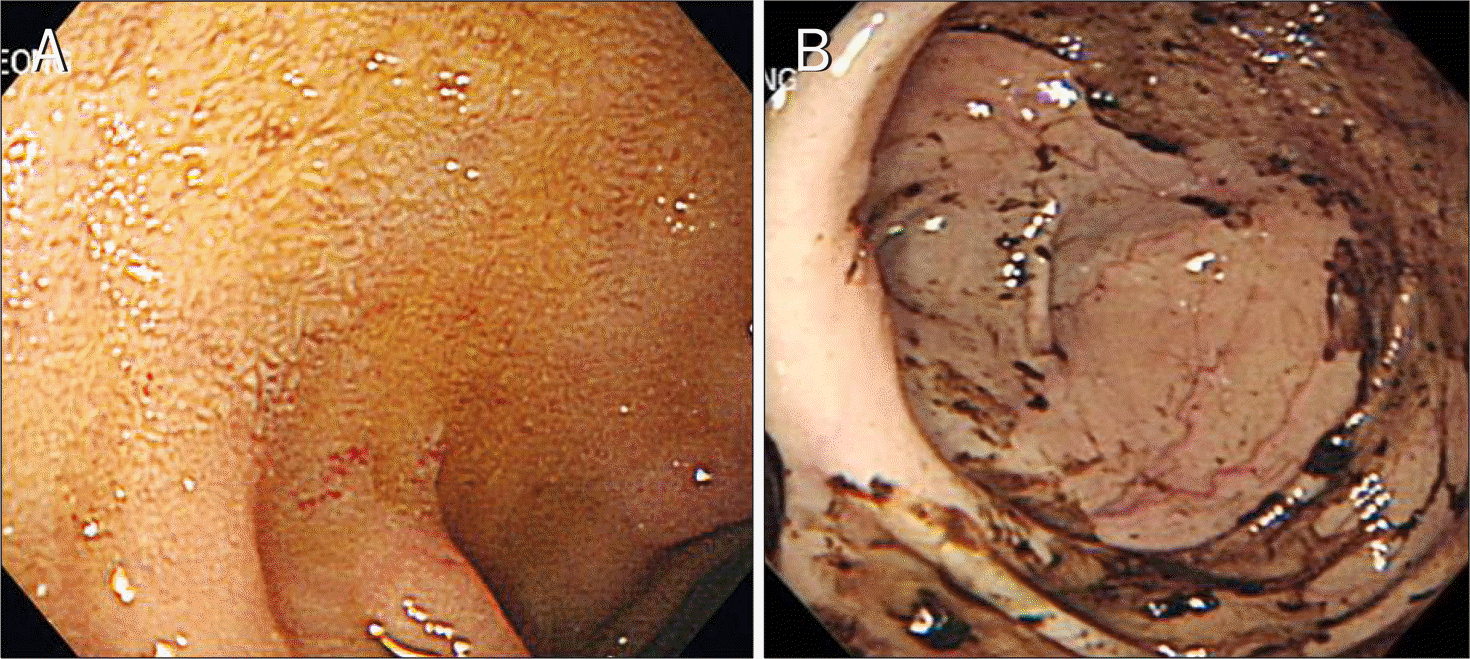




 PDF
PDF ePub
ePub Citation
Citation Print
Print


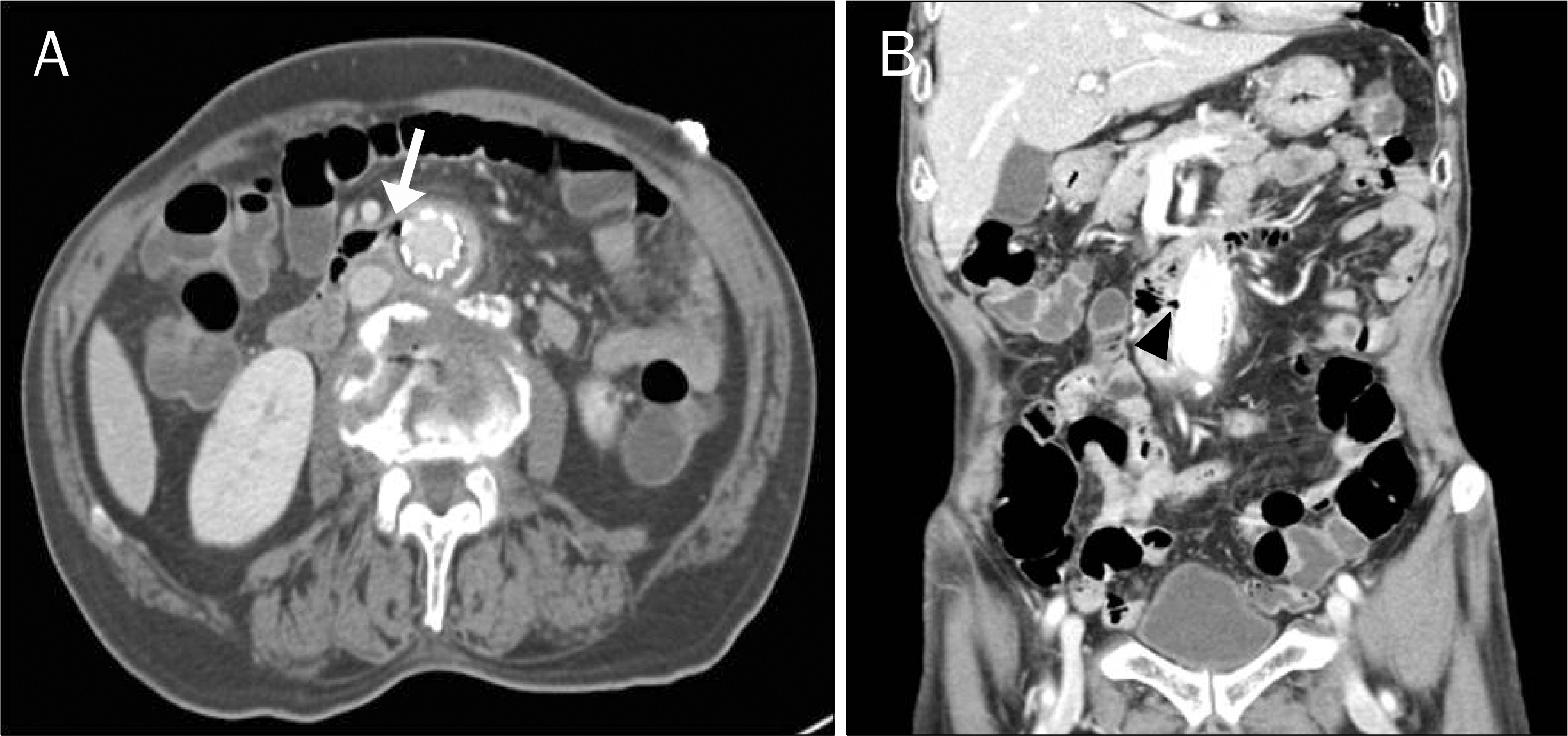
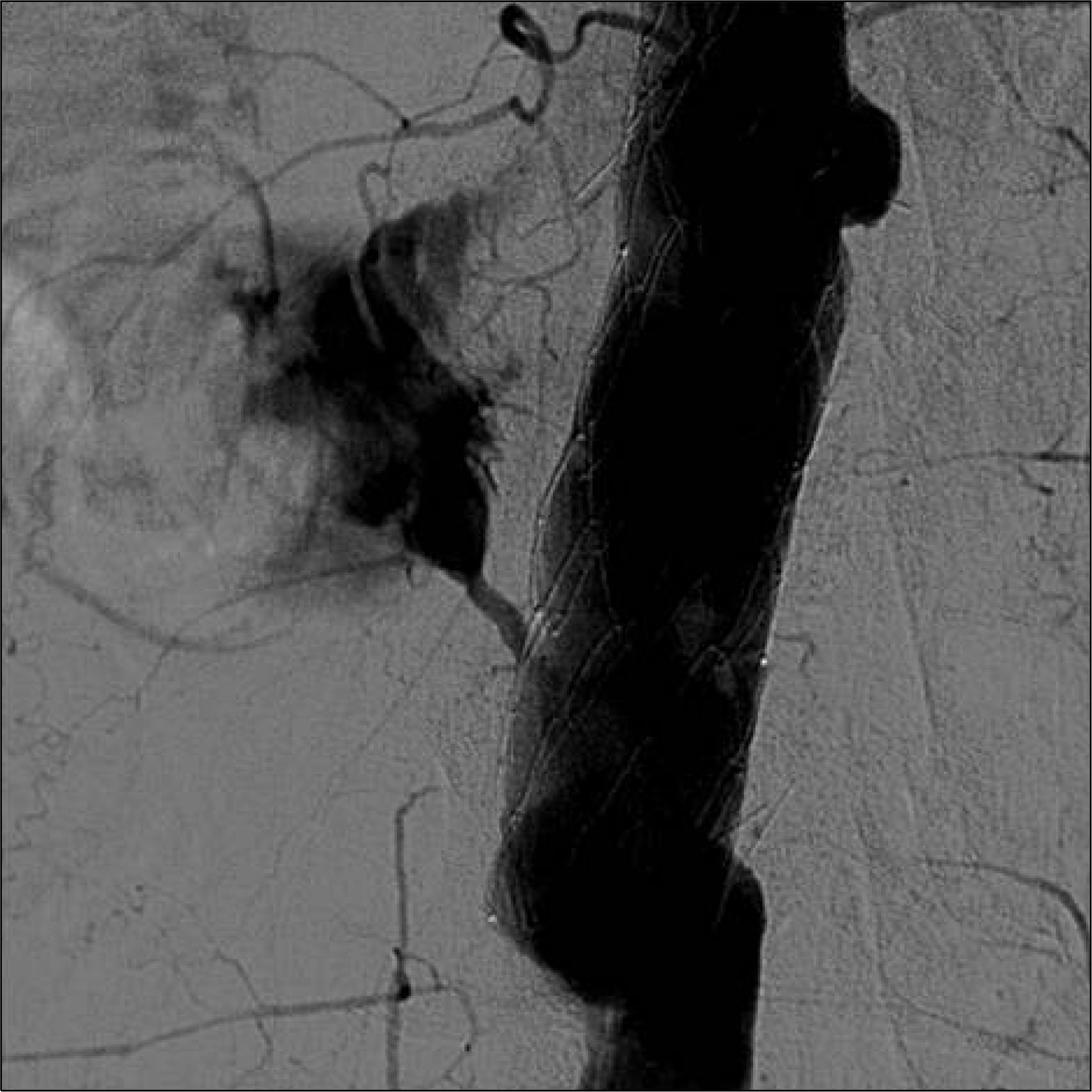
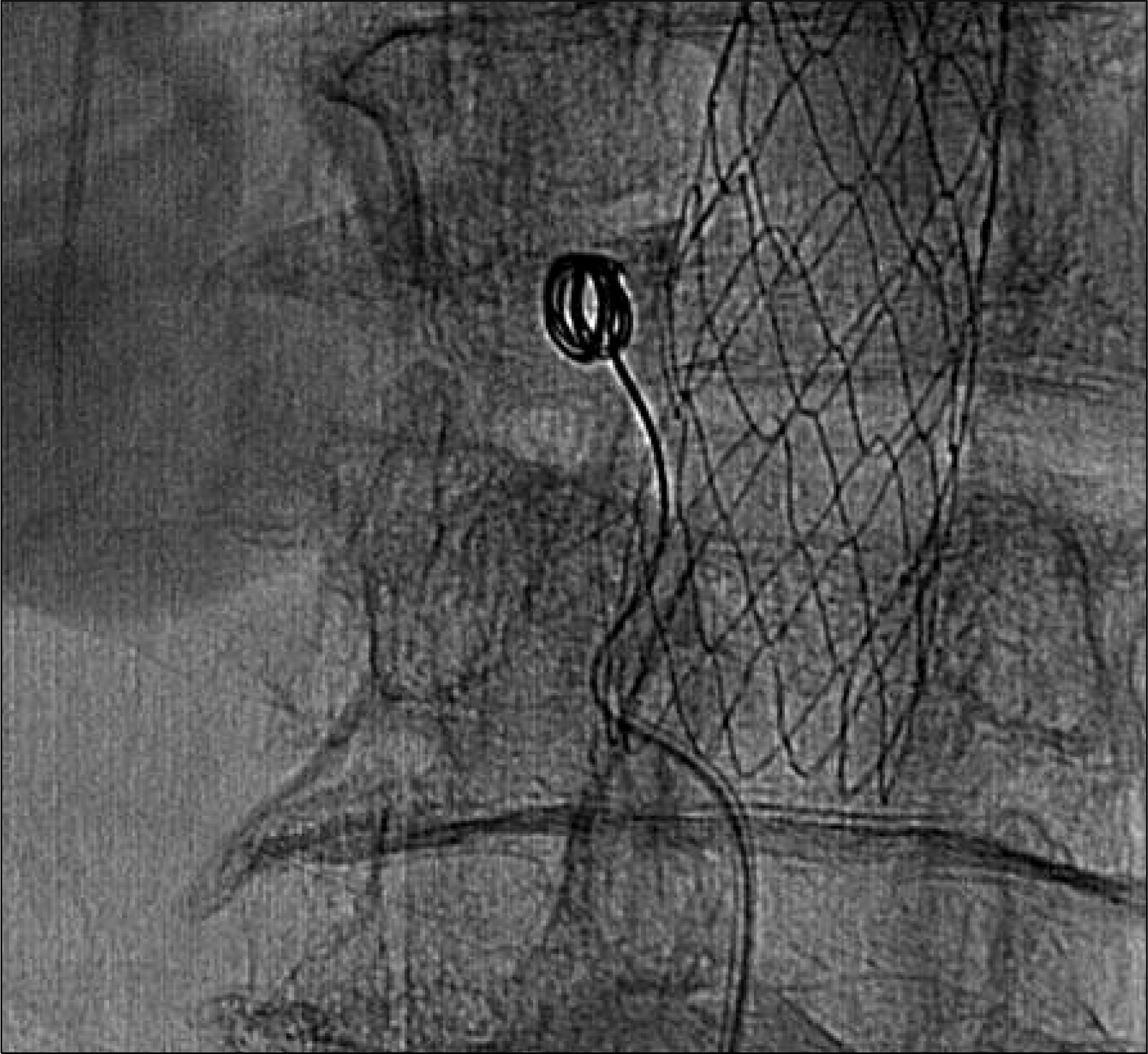
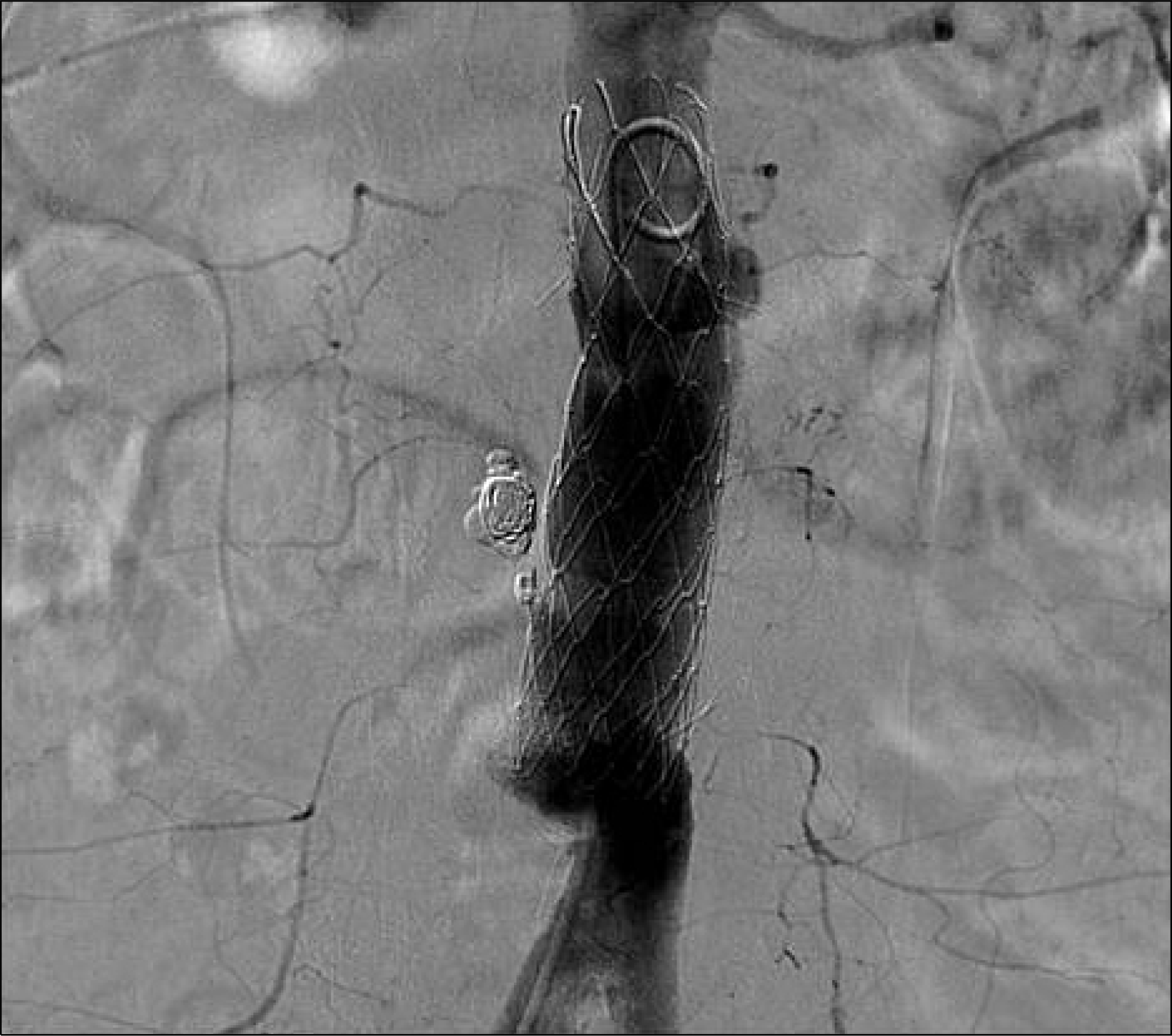
 XML Download
XML Download